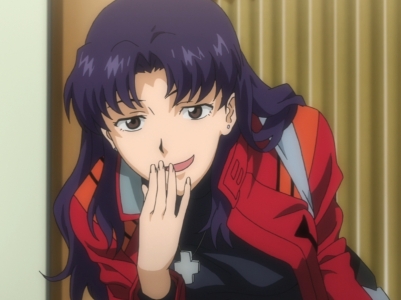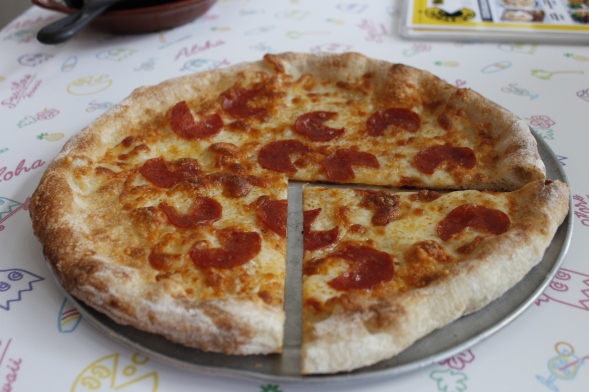The future is grim. You did everything your parents told you to do to succeed. You studied hard. You passed your exams. You graduated and applied for a job at a company. Surely, there would be a job waiting for you. Just like it had been for your father.
Instead, everything your parents told you was a lie. Companies are no longer hiring younger workers en masse, preferring to hold onto their older employees to not break their promises of lifetime employment to them. Only the top 10 percent of graduates are even considered now, with those missing that cut falling by the wayside. What’s even scarier is that the competition to enter the workforce is nothing like what your parents faced. Hyper-confident and hyper-capable women are now able to enter the running, and the companies are scooping them up in droves.

Welcome to the Post-Bubble Era of Japan. As you may recall from my last Anime is Culture article, Japan started making huge concentrated efforts to rebuild their broken country after World War II. With the rise of democracy and assistance from the American government (as shady as it was, it did help their recovery), Japan rose from the ashes like a phoenix.
With Article 9 in place, the Japanese were prevented from funding a full standing military. Instead, they focused on promoting their peace policies by developing technology that could be used to improve the lives of people around the world. In doing so, during the 1970’s and ’80’s, Japan became an economic powerhouse. Companies like Toyota and Sony were worldwide names that put out products sought by millions around the world. This would be Japan’s economic bubble.
Such success led to the prosperity of the Japanese people. During this time, the vast majority of Japanese considered themselves middle-class on the socioeconomic scale. Men would go to school and then apply for company jobs. After graduation, these companies would pick them up, and their careers would be set. Everyone was able to earn a living wage and live relatively comfortable lives.
However, this would not last. Around 1990, the economic bubble burst, causing thousands of companies to lose money and default on loans. This led to massive unemployment, and a huge economic crisis fell upon the people. The generation of young men and women that came of age during this time were promised the same opportunities that their parents had enjoyed, but the bursting of the bubble effectively shut them out. Instead of accessible employment, there was now a small window where only the elite could enter through.


This grim and foreboding atmosphere was what influenced the tone and stories of anime during the ’90s. One of the greatest examples of a post-bubble series is the highly influential anime Neon Genesis Evangelion. In the series, the world has been destroyed by a cataclysmic event known as the Third Impact. As a result, more than 50 percent of the human population was wiped out, and those who are left struggle to survive in a world where the sea is dyed red like blood.

The main character, Shinji Ikari, is a young adolescent man that is forced by his father to fight in a giant robot against alien lifeforms known as “Angels.” However, this isn’t the only struggle he faces. He also struggles to come to terms with the new social norms he’s entering into.

He is forced to do the dirty work of NERV headquarters when fighting the Angels. When he’s not fighting, he’s under rigorous testing and examination. Not only is he constantly bombarded by work like this, he is also surrounded by capable women that outshine him. Rei Ayanami, the First Child, is a model soldier, following her orders without dissent or complaint, almost like a machine. Asuka Langley Soryu, the Second Child, is a German-born pilot that demonstrates superiority in everything she does.


This is representative of the the world seen by the Post-Bubble Generation. Shinji is the post-bubble male who has to struggle to survive in the unforgiving world of NERV, which is representative of the Japanese company. He managed to get in, but only because his father is the head of NERV. However, his performance as a pilot is an utter disappointment compared to the other more capable women, and it shows in his father’s favor for Rei. This relationship he has with the other pilots shows how the post-bubble male viewed his job prospects. If he was lucky enough to get a job, he still would never be able to compete with the influx of women into the workforce.
This mindset lead to many men losing confidence in themselves. Just like Shinji, they viewed themselves as weak and unable to do anything by themselves. They want to rely on the help of their parents, who know that they are struggling but can’t really help. This leads into Shinji’s struggle with the adults in his life. Much like his strained relationship with his father, Gendo, the post-bubble male wanted desperately to gain the recognition and acceptance of the older generation, but they were left to fend for themselves instead. The companies would only accept them into the fold if they found a use for them, just like how Gendo did with Shinji. The women who entered the workforce ahead of the post-bubble men could now exert their power over these young males, and the shift in gender-power dynamics was incredibly daunting to them.
On one hand, you have Ritsuko, NERV’s chief scientist and the one in charge of monitoring the usefulness of the EVA pilots. She is cold, calculating, and regards Shinji not as a person, but more of a lab rat or tool to further her own research and goals. On the other hand, there’s Misato, Shinji’s direct superior and caretaker. She pushes herself onto him, making him roommate with her. While she does it in good nature, Misato lords her femininity over Shinji as she tries to mold him into what she believes is a better man.


So what do you do when your world view and job prospects mirror the apocalyptic world of Evangelion? How do you survive in the world when you can’t get a job because of the rise of women and the highly selective hiring process? We’ll discuss this in my next “Anime is Culture” post, “Hide to Survive: Otaku, NEET, and Hikikomori.”


![[Anime is Culture] Get in the Robot, Shinji: “Evangelion” and Post-Bubble Japan](https://otakuohana.files.wordpress.com/2018/04/evangelion1.jpg?w=600)

















